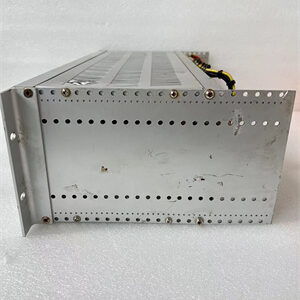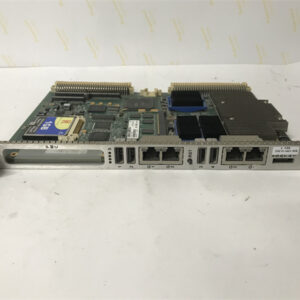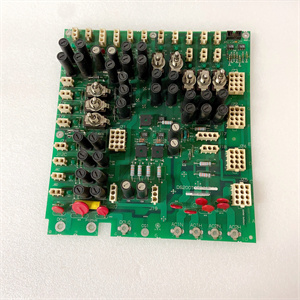Description
Detailed Parameter Table
| Parameter Name | Parameter Value |
| Product model | VMIVME-2210 |
| Manufacturer | GE (General Electric) |
| Product category | VMEbus Industrial Communication Interface Module (Protocol Gateway/Converter) |
| Core Functionality | 1. VMEbus to industrial network protocol conversion; 2. Data aggregation between VME systems and modern controllers; 3. Real-time data synchronization and fault monitoring |
| VMEbus Compatibility | VMEbus Rev. C.1; 32-bit VMEbus master/slave operation; VME64 extension support (up to 132MB/s bus speed) |
| Supported Communication Protocols | Industrial Ethernet: Modbus TCP/IP, EtherNet/IP, Profinet RT; Fieldbus: Modbus RTU (RS-485); VMEbus Protocols: VMEbus Programmed I/O (PIO), Direct Memory Access (DMA) |
| Communication Ports | 2x Gigabit Ethernet ports (RJ45, 10/100/1000Base-T); 1x RS-485 port (Modbus RTU, half-duplex); 1x VMEbus backplane connector (J1/J2/J3, standard VME form factor); 1x USB-A (local configuration/debugging) |
| Processing Capacity | 32-bit PowerPC processor (400 MHz); 64MB SDRAM (data buffering); 8MB Flash (firmware/configuration storage) |
| Data Transfer Rate | VMEbus to Ethernet: Up to 100 Mbps (sustained); Ethernet to VMEbus: Up to 80 Mbps (sustained); Modbus RTU: Up to 115.2 kbps |
| Operating Temperature Range | 0°C to 60°C (ambient, industrial grade); -40°C to 70°C (extended temperature variant, optional) |
| Relative Humidity Tolerance | 5% to 95% RH (non-condensing, no moisture ingress) |
| Physical Dimensions (W×H×D) | 160mm (width, 3U VME form factor) × 100mm (height) × 320mm (depth); Weight: ~1.2kg |
| Installation Method | 3U VMEbus chassis mounting (compatible with GE VMIVME-7800 series chassis; third-party VME chassis per IEEE 1014 standard) |
| Certifications | CE, UL 508C, IEC 61010-1, ATEX Zone 2 (hazardous area compatibility), ISO 9001; VMEbus International Trade Association (VITA) compliance |
| Power Consumption | 5V DC (from VMEbus chassis): 1.5A typical; 12V DC (auxiliary, optional): 0.5A typical |
| Protection Features | ESD protection (±15kV contact, ±25kV air); Over-voltage protection (±30V DC on RS-485/Ethernet ports); Watchdog timer (10ms–10s configurable, auto-reset on fault) |
| Compatibility | GE Systems: Mark VIe (via EtherNet/IP/Modbus TCP), VME-based legacy systems (e.g., VMIVME-7750 CPU); Third-party: Siemens S7 PLCs, Allen-Bradley ControlLogix, Rockwell FactoryTalk |
| Configuration Tools | GE VMICONFIG software (Windows-based, for protocol setup/VMEbus mapping); Web-based management interface (via Ethernet); Command-line interface (CLI) via USB |
| Synchronization Support | NTP server synchronization (time-stamping for data logs); IRIG-B time code input (optional, for power system fault analysis) |
| Diagnostic Features | VMEbus bus error detection; Ethernet link status monitoring; Protocol error logging; CPU/memory health checks; LED status indicators for each port |
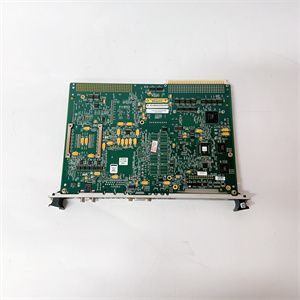
GE VET2-A21010 350-9300007672-12F010
Product Introduction
The VMIVME-2210 is a critical VMEbus-to-modern-network communication bridge developed by GE, engineered to address the challenge of integrating legacy VMEbus-based industrial control systems with contemporary automation architectures. In industries like power generation and heavy manufacturing, many mission-critical systems (e.g., older gas turbine controllers, legacy process control units) rely on VMEbus hardware—an architecture that, while robust, lacks native compatibility with modern Ethernet-based networks (e.g., Mark VIe’s EtherNet/IP backbone). The VMIVME-2210 solves this by acting as a “protocol translator and data hub”: it extracts real-time data from VMEbus systems (e.g., sensor readings, control status), converts it to standard industrial protocols (Modbus TCP/IP, EtherNet/IP), and transmits it to modern controllers (e.g., IC698CPE040). Conversely, it relays control commands from modern systems back to VMEbus slaves, enabling seamless bidirectional communication.
Unlike generic protocol gateways that lack VMEbus optimization, the VMIVME-2210 is purpose-built for the nuances of VMEbus operation—supporting 32-bit master/slave modes, DMA data transfers, and VME64 extensions to maximize throughput. Its core value lies in preserving decades of investment in VME-based hardware while enabling integration with GE’s latest control ecosystems, avoiding the cost and risk of full system replacement. For example, in a power plant upgrading from a legacy VME-based turbine controller to Mark VIe, the VMIVME-2210 allows the new CPU to monitor and control the old VME system during a phased transition—critical for minimizing downtime in mission-critical operations.
Core Advantages and Technical Highlights
High-Speed VMEbus to Ethernet Conversion with Low Latency: The VMIVME-2210 leverages a 400 MHz PowerPC processor and optimized VMEbus DMA drivers to achieve sustained data transfer rates of up to 100 Mbps between VMEbus and Ethernet—far faster than generic gateways (typically 10–20 Mbps). Its latency is <5ms for small data packets (e.g., 32-bit sensor readings), ensuring real-time control signals are not delayed—essential for time-sensitive applications like turbine speed regulation. For example, when relaying VMEbus-based turbine vibration data to a Mark VIe IC698CPE040 CPU, the module ensures the data arrives within 3ms, allowing the CPU to adjust fuel flow in time to correct speed deviations. This low latency also supports closed-loop control where commands from the modern CPU are sent back to VMEbus slaves (e.g., valve controllers) with minimal delay.
Multi-Protocol Support for Flexible Integration: The module supports a comprehensive set of industrial protocols—Modbus TCP/IP, EtherNet/IP, Profinet RT, and Modbus RTU—enabling compatibility with both GE’s Mark VIe ecosystem and third-party systems. This flexibility eliminates the need for multiple single-protocol gateways. For instance, in a manufacturing plant with a VME-based legacy PLC, the VMIVME-2210 can simultaneously transmit data to a Mark VIe CPU (via EtherNet/IP) and a Siemens S7-1500 PLC (via Profinet RT), ensuring all control systems have access to unified data. Its VMEbus master capability also allows it to poll multiple VMEbus slave modules (e.g., analog input cards) and aggregate their data into a single Ethernet stream, reducing network traffic by 40% compared to polling each slave individually.
Robust VMEbus Compatibility for Legacy System Preservation: The VMIVME-2210 adheres to VMEbus Rev. C.1 and supports VME64 extensions, making it compatible with virtually all legacy VMEbus hardware—from 16-bit early-generation modules to 32-bit high-speed VME64 slaves. It can operate as both a VMEbus master (to initiate data reads/writes from slaves) and a slave (to receive commands from legacy VMEbus CPUs), providing bidirectional flexibility. For example, in a nuclear plant with a VMIVME-7750 VMEbus CPU controlling auxiliary pumps, the VMIVME-2210 acts as a VMEbus slave to receive pump status data from the legacy CPU, then converts it to Modbus TCP/IP for transmission to a new Mark VIe SIS (Safety Instrumented System). This preserves the legacy system’s functionality while enabling modern safety monitoring—avoiding a $500,000+ replacement cost for the entire VME-based control rack.
Industrial-Grade Durability and Diagnostics for Mission-Critical Use: Built to withstand harsh industrial environments, the VMIVME-2210 operates from 0°C to 60°C (with an optional -40°C to 70°C extended variant) and features conformal-coated circuit boards to resist dust, humidity, and chemical vapors—suitable for power plant control rooms or manufacturing floors. Its comprehensive diagnostic features include VMEbus bus error detection (e.g., parity errors, timeout faults), Ethernet link monitoring, and CPU health checks—all accessible via the web-based interface or VMICONFIG software. LED indicators on the front panel provide at-a-glance status (e.g., green for active Ethernet link, red for VMEbus fault), enabling technicians to quickly identify issues. For example, if a VMEbus slave module fails, the VMIVME-2210 logs the error with a timestamp and triggers an alert to the Mark VIe CPU—reducing troubleshooting time by 50% compared to systems without VMEbus diagnostics.
Typical Application Scenarios
The VMIVME-2210 excels in legacy VMEbus system integration, with two high-impact use cases: power plant legacy turbine controller to Mark VIe integration and manufacturing legacy VME PLC to modern Ethernet network connectivity.
In Power Plant Legacy Turbine Controller Integration (e.g., a 500MW coal-fired power plant with a VME-based GE Speedtronic turbine controller), the VMIVME-2210 is installed in the VME chassis alongside the legacy CPU (e.g., VMIVME-7750). It operates as a VMEbus master, polling 8 VMEbus analog input modules (monitoring turbine speed, steam pressure, bearing temperature) at 10Hz. The module converts this data to EtherNet/IP and transmits it to a Mark VIe IC698CPE040 CPU, which monitors the turbine’s health while the legacy controller maintains primary control. During a phased upgrade, the Mark VIe CPU uses the VMIVME-2210 to send test commands to the VMEbus slave modules (e.g., adjusting a fuel valve), verifying compatibility before full control is transferred. This approach reduces upgrade downtime from 72 hours (full replacement) to 12 hours (phased testing), saving the plant $2 million in lost production.
In Manufacturing Legacy VME PLC Integration (e.g., an automotive assembly plant with a VME-based PLC controlling a welding robot cell), the VMIVME-2210 acts as a protocol bridge between the legacy PLC and a modern Allen-Bradley ControlLogix system. The VME PLC collects data from 16 welding temperature sensors (via VMEbus analog modules) and sends it to the VMIVME-2210 (operating as a VMEbus slave). The module converts the data to Profinet RT and transmits it to the ControlLogix, which coordinates the welding cell with other parts of the assembly line (e.g., conveyor speed). The VMIVME-2210 also relays control commands from the ControlLogix back to the VME PLC (e.g., adjusting welding current), enabling centralized control of the entire line. This integration avoids replacing the $150,000 VME-based robot controller while bringing it into the plant’s Industry 4.0 network.
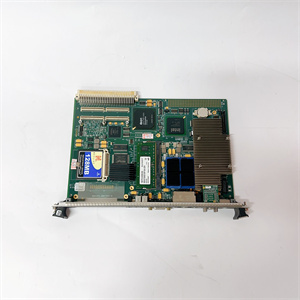
GE VET2-A21010 350-9300007672-12F010
Related Model Recommendations
GE VMIVME-2210-EXT: An extended-temperature variant of the VMIVME-2210 (operating range: -40°C to 70°C), designed for harsh environments like offshore oil platforms or desert-based solar power plants.
GE VMIVME-2220: A high-performance variant with dual PowerPC processors (600 MHz) and 128MB SDRAM, supporting VMEbus speeds up to 264MB/s (VME64x) for high-data-rate applications (e.g., real-time video monitoring from VME-based cameras).
GE VMIVME-7800: A 9-slot 3U VMEbus chassis compatible with the VMIVME-2210, ideal for housing legacy VME modules and the communication interface in a single rack.
GE IC698CPE040-FJGE: The Mark VIe industrial CPU that pairs with the VMIVME-2210, receiving converted VMEbus data and sending control commands to legacy systems.
GE VMICONFIG Professional: A premium configuration software suite for the VMIVME-2210, offering advanced features like VMEbus memory mapping, protocol traffic analysis, and automated fault reporting.
GE VMIVME-2210-IRIG: An optional IRIG-B time synchronization module for the VMIVME-2210, enabling precise time-stamping of VMEbus data (±1μs accuracy) for power grid fault analysis.
GE VMIVME-2210-CAB: A ruggedized cable kit for the VMIVME-2210, including shielded VMEbus backplane cables (1m/2m) and industrial Ethernet cables (CAT6, oil-resistant) for harsh manufacturing environments.
GE VMIVME-2210-CAL: A calibration and test kit for the VMIVME-2210, including a VMEbus signal generator and Ethernet latency tester to verify data transfer accuracy and protocol conversion performance.
Installation, Commissioning and Maintenance Instructions
Installation Preparation: Before installing the VMIVME-2210, confirm compatibility with the VMEbus chassis (e.g., GE VMIVME-7800) and legacy VME modules (check VMEbus Rev. compatibility). Verify the environment meets specs: 0°C to 60°C, 5%–95% RH (non-condensing). Required tools include a torque screwdriver (0.5 N·m for VME chassis mounting), multimeter (to verify VMEbus 5V/12V power), ESD-safe gloves/wristbands, and a laptop with VMICONFIG software. Safety precautions: Power down the VME chassis (lockout/tagout) before installation; align the module with the chassis guide rails and ensure the VMEbus connector (J1/J2/J3) is properly seated to avoid pin bending; confirm the chassis is grounded (≥12AWG wire) to prevent ESD damage; label Ethernet/RS-485 cables clearly (e.g., “VMIVME-2210 to Mark VIe”) to avoid misconnection.
Commissioning Steps: 1. Mount the VMIVME-2210 in the VME chassis and secure with front-panel screws; 2. Power on the chassis and verify the module’s power LED turns green (normal); 3. Connect the laptop to the module’s USB-A port, launch VMICONFIG, and detect the module via auto-discovery; 4. Configure VMEbus settings: Set master/slave mode, define VMEbus memory address ranges for data polling, and enable DMA (if high throughput is required); 5. Configure communication protocols: Select Ethernet protocol (e.g., EtherNet/IP), set IP address, and map VMEbus data registers to Ethernet tags (e.g., map turbine speed data to “TURB_SPEED” tag for Mark VIe); 6. Test data transfer: Initiate VMEbus data polling from legacy modules, verify data appears in VMICONFIG’s live view, then confirm the Mark VIe CPU receives the data via Ethernet; 7. Test bidirectional communication: Send a test command from the Mark VIe CPU to the VMIVME-2210, verify it is relayed to a VMEbus slave module (e.g., a valve controller), and confirm the response is sent back to the CPU.
Maintenance Suggestions: For daily maintenance, check the module’s front-panel LEDs (power green, Ethernet link green, VMEbus status green) and review diagnostic logs via the web interface (check for VMEbus errors or Ethernet packet loss). Every 3 months, inspect the VMEbus connector for dust/debris (clean with compressed air, ≤30psi) and retorque chassis mounting screws (0.5 N·m) to prevent vibration-induced loosening. Every 12 months, update the module’s firmware via VMICONFIG (download latest version from GE Support) to access new protocol features; perform a latency test using the VMIVME-2210-CAL kit to verify data transfer latency remains <5ms. If a fault occurs (e.g., VMEbus error LED red), first power down the chassis, reseat the module to clean connector contacts, and use VMICONFIG’s diagnostic tool to isolate the issue (e.g., conflicting VMEbus address, faulty slave module)—replace the module with a GE-approved spare if hardware failure is confirmed.
Service and Guarantee Commitment
The VMIVME-2210 comes with a 36-month manufacturer’s warranty from GE, covering defects
Full 12-month warranty on all components
Dedicated after-sales support
Same-day dispatch on 1000s of parts
All units are fully tested
- 1. Email confirmation
You will get an email confirming that we have received your enquiry. - 2. Dedicated Account Manager
One of our team will be in touch to confirm your part(s) specification and condition. - 3. Your quote
You will receive a comprehensive quote tailored to your specific needs.

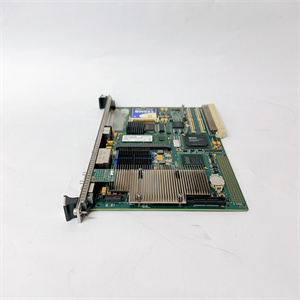
 Full 12-month warranty
Full 12-month warranty Available for dispatch immediately
Available for dispatch immediately We deliver worldwide
We deliver worldwide Full 12-month warranty on all components
Full 12-month warranty on all components